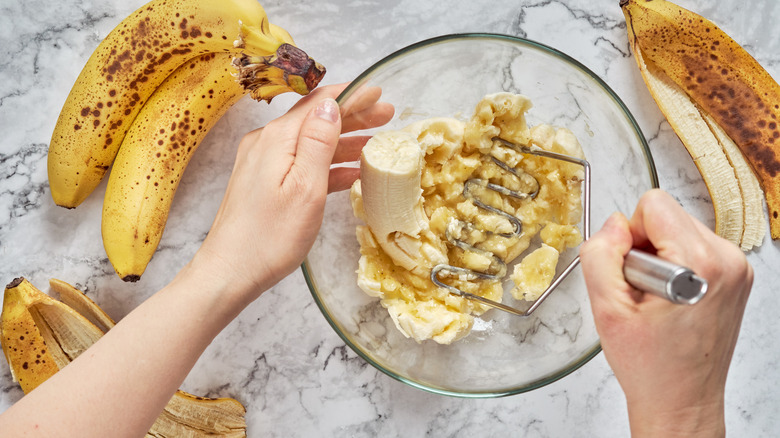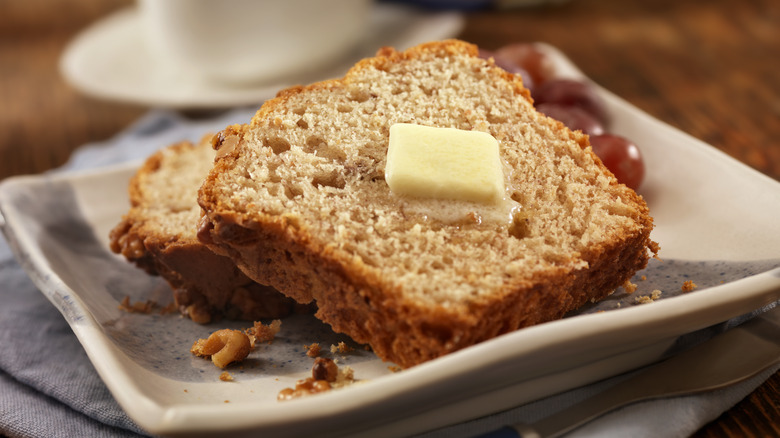Your Banana Bread Is Mushy Because Of One Common Mistake
Have you bought too many bananas and now you don't know what to do with the too-squishy-to-eat, brownish-black fruits? Turning them into a moist loaf of banana bread is a go-to solution. Beyond being comforting and delicious, banana bread can put all those soon-to-rot overripe bananas to use. But if you try to use up all your bananas without paying attention to the ratio of other ingredients, your bread can turn out damp, soggy, and mushy. Contrary to what one may think, there is such a thing as using too many bananas in a banana bread.
Besides adding a sweet and fruity flavor to the bread, bananas also add a lot of moisture to the batter. When used in moderation, the bread will be wonderfully tender, moist, and spongey. But use too many, and the same fruit will add way too much moisture, giving the loaf an unappetizing undercooked texture that is wet, mushy, and heavy in the middle.
How many bananas should you use?
As tempting as it may be to dump all those overripe bananas into your batter, four medium-sized bananas are typically the most that a single loaf of banana bread can accommodate — any more and you're likely looking at a loaf that's going to be dense and heavy rather than soft and moist in the middle.
If you're experimenting with your recipe and the amounts of the ingredients, a good ratio to go by is a cup of mashed bananas for every cup of flour that you add to the batter. That means you'll need approximately one whole banana, plus another half, for each cup of flour in your recipe. Consider how much flour you need depending on the number of bananas you have, or vice-versa. While the ratio for bananas to flour does have some room in that you could work with, meaning you could use two whole bananas rather than one and a half if you must, any more than that is a recipe for mushiness.
What to do if you've used too many bananas
If you must add an extra banana into your batter, there are ways to prevent the bread from turning mushy. Using a lot of bananas adds excess moisture, and there are two ways to get rid of it. You could either add more flour or increase the baking time. Add a tablespoon of extra flour at a time into the batter and give it a good whisk until its consistency starts to look right: thick but runny enough to fall off a spoon. Alternatively, consider giving the bread an extra 10 or so minutes in the oven, which should be enough time for excess moisture to evaporate as steam.
If it's too late to salvage the soggy loaf, fret not, as there are creative ways to put mushy banana bread to use. You could always pop slices of the bread into a toaster and eat them as crisp pieces of toast with lashings of butter. Mushy banana breads also make for excellent puddings, since bread puddings are already soggy thanks to the heaps of custard, anyway. You could even turn wet banana bread into cubes of crisp croutons to add to granola and bowls of yogurt, or even to savory salads to give them a sweet and fruity edge.



